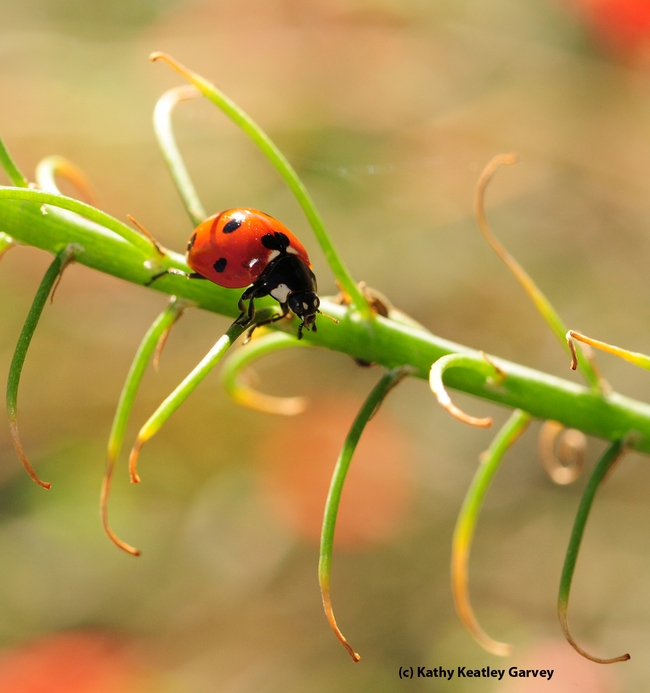Some folks like to watch the grass grow, flowers bloom, or clouds drift.
Others just like to sit back and look for insects.
We spotted this seven-spotted lady beetle (aka ladybug) last Monday morning in the Häagen-Dazs Honey Bee Haven, a half-acre pollinator garden on Bee Biology Road at the University of California, Davis.
It's a predator, a beneficial insect, and an icon. As one of the most recognizable of all insects, it inspires clothing, art and jewelry themes; home décor; and video games, not to mention all things entomological and the citizen-scientist Lost Ladybug Project. It even prompted five states--Delaware, Massachusetts, New Hampshire, Ohio, and Tennessee--to declare it their official state insect. Never mind if these states are, in the political sense of the word, red or blue, denoting Republicans or Democrats. When it comes to state insects, they're all red!
Lady beetles are especially known for their voracious appetite for aphids, scale insects, mealybugs, mites and other soft-bodied insects. A gardener's friend. A biocontrol dream. An aphid's nightmare.
It's easy to see why the seven-spotted lady beetle, Coccinella septempunctata, is so named. Seven large black spots dot its red wing covers or elytra.
Indeed, if you know Latin, you know that its scientific name, septempunctata, means seven (septem) and spot (punctus).
We watched our seven-spotted friend prowl for aphids on a color-coordinated California fuchsia (Zauschneria californica mexicana).
It was "walking the line," Johnny Cash-style, keeping a close watch on...tasty aphids.
Attached Images:


